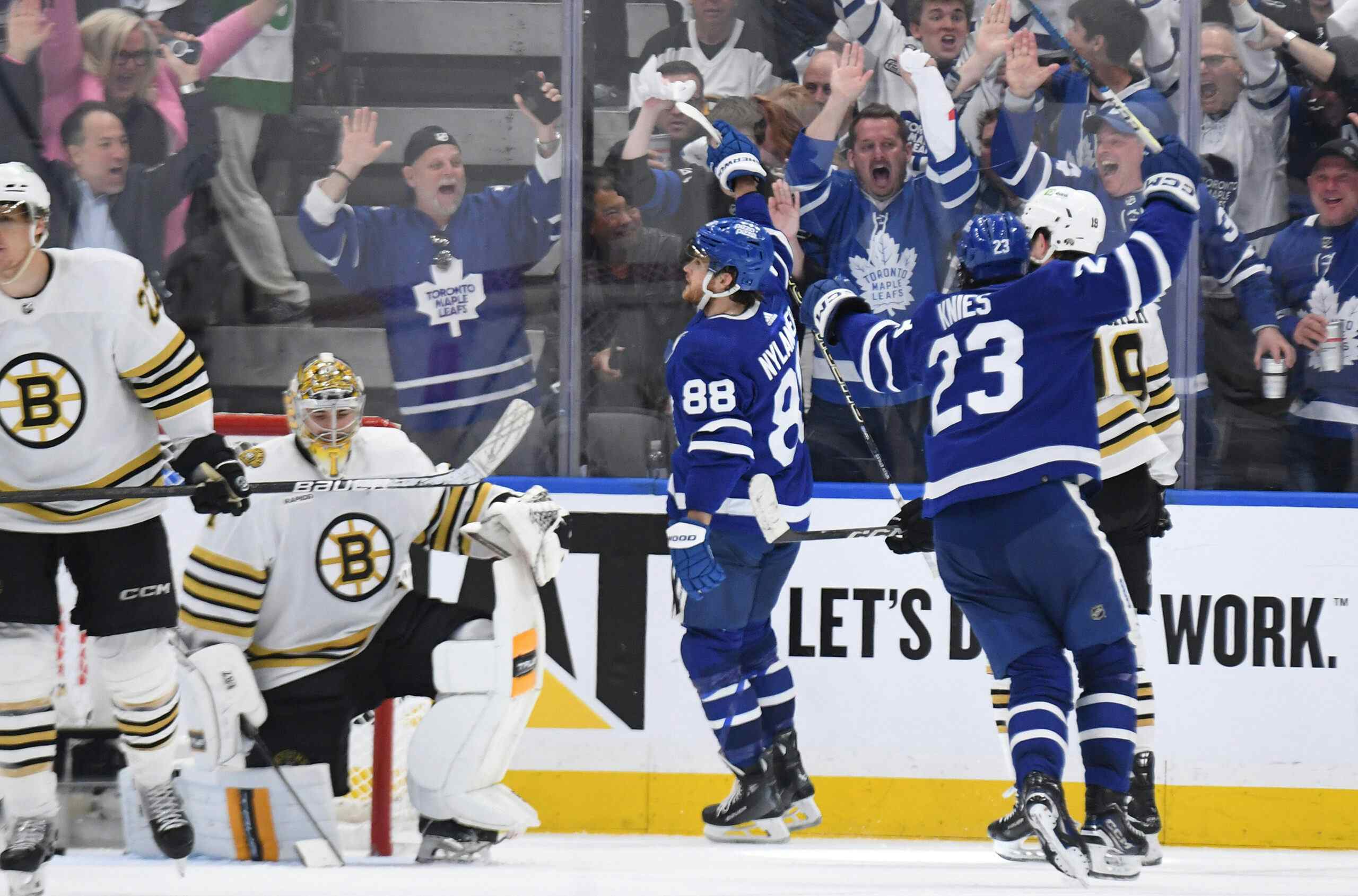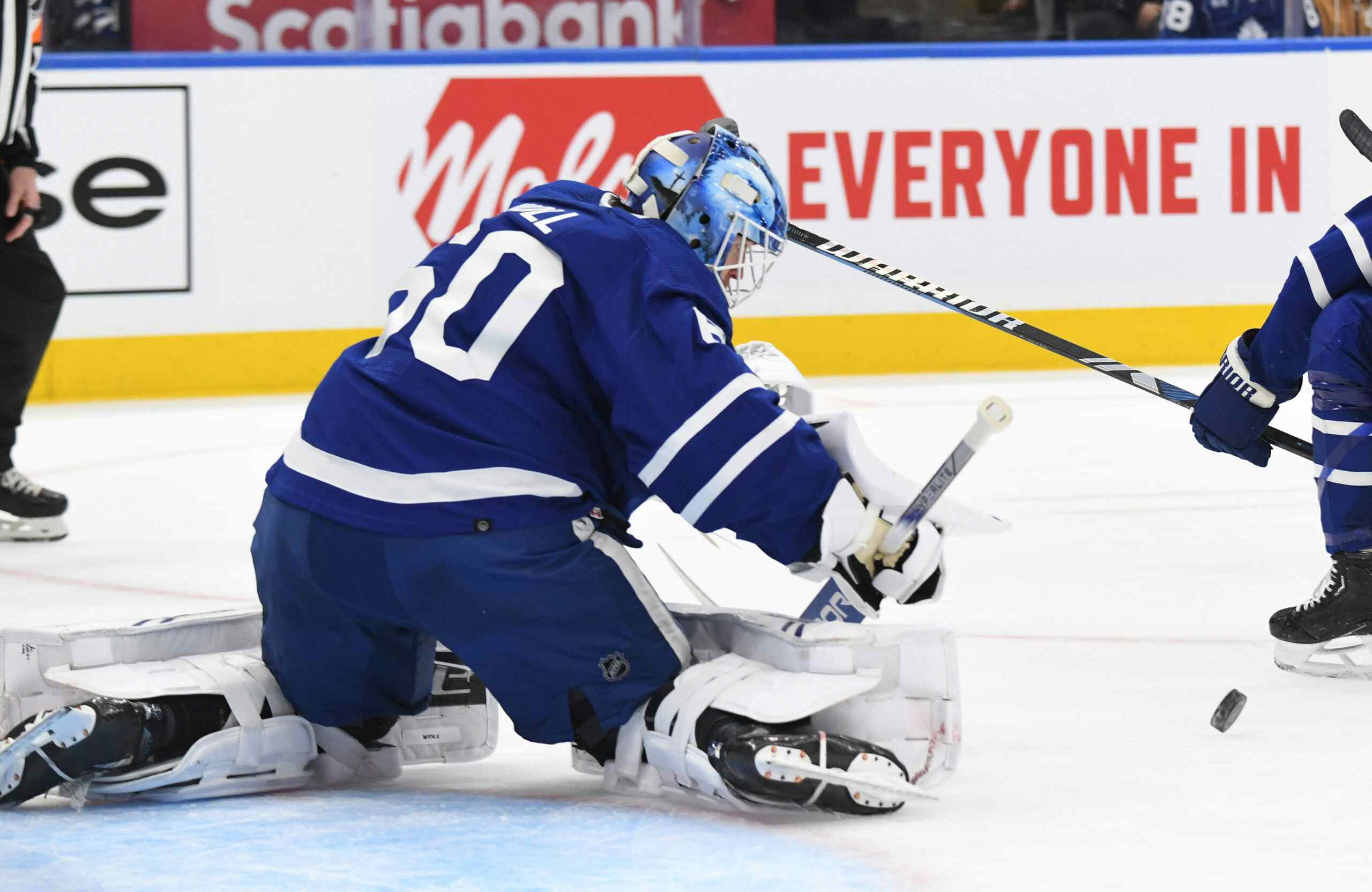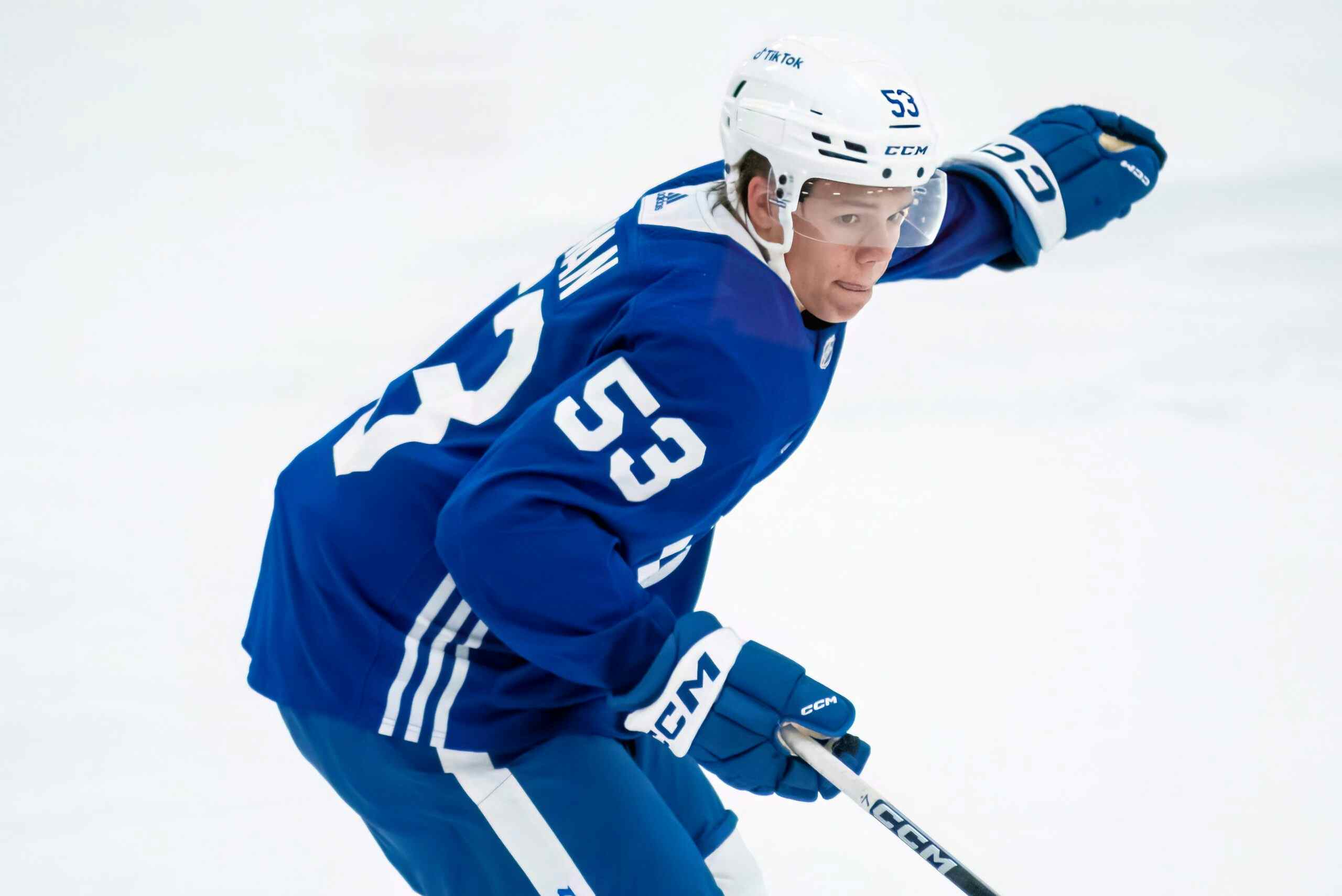Why Morgan Rielly’s 2nd contract could prove difficult and expensive

Photo Credit: Kevin Hoffman / USA TODAY Sports
Toronto Maple Leafs defenseman Morgan Rielly will need a new contract before next season.
The young defenseman – Rielly turned 22-years-old last month – is on the final year of his entry-level contract and is still seen a cornerstone piece for Toronto’s future, as well he should be. Though Rielly’s defensive game isn’t top-of-the-lineup quality yet (though admittedly it has been this season when he’s played with any partner except Matt Hunwick), the Vancouver-born blue liner has been consistent and productive while playing major minutes and handling matchup-type deployments this season.
Because of how productive Rielly has been and because of how many minutes he logs, he’s going to cost the Maple Leafs a pretty penny on his second contract. That is unless the Maple Leafs opt to go with a bridge deal, which is almost always a mistake when it comes to a player with star potential.
Let’s get into some of the issues that are likely to impact Rielly’s second-contract valuation.
The RFA class of 2016
Rielly’s contract situation is complicated anyway, but it could get even more complex because he’s about to be part of a cohort of high-end restricted free agent defensemen coming off of their entry-level contracts. This is an impressive class of players and includes Seth Jones, Hampus Lindholm and Jacob Trouba.
Elliotte Friedman reported his belief that the Maple Leafs and Rielly were working on an extension back in February, but we haven’t heard anything since. That’s in keeping with Lamoriello/Shanahan’s usual modus operandi. It seems likely that the two sides are still talking, or will talk again shortly after the conclusion of this season.
It might behoove the Leafs to get Rielly’s deal done promptly, because the market value of a long-term Rielly extension could be influenced by deals that are handed out to the likes of Jones, Lindholm and Trouba. You’d much rather be talking about Justin Faulk and John Klingberg as comparables, than Oliver Ekman-Larson and Dougie Hamilton. And if Jones or Trouba get into Hamilton territory, or better, with their next deals; then you’d have to think that would make it tougher for the Maple Leafs to keep Rielly’s annual average value down.
Just as an exercise, let’s see how Rielly stacks up in comparison with these other young top-four defenseman.
Offensively speaking, Rielly is probably the second best offensive defenseman in this group behind only Lindholm. Certainly he’s been the second most productive so far in his NHL career:
| First 3 seasons | GP | G | A | Pts | Points/G | PPP | EV P/60 | EV Primary A/60 |
|---|---|---|---|---|---|---|---|---|
| Hampus Lindholm | 232 | 23 | 69 | 92 | 0.4 | 25 | 0.92 | 0.41 |
| Morgan Rielly | 232 | 18 | 72 | 90 | 0.39 | 28 | 0.8 | 0.25 |
| Seth Jones | 236 | 17 | 64 | 81 | 0.34 | 32 | 0.68 | 0.24 |
| Jacob Trouba | 208 | 23 | 48 | 71 | 0.34 | 14 | 0.71 | 0.17 |
In terms of two-way impact, Lindholm is once again the class of this group. Anaheim should basically just hand him a blank check and agree to whatever he wants. Rielly is, it would seem, not really in the same weight class as Trouba, Jones and Lindholm are in terms of his two-way game:
| First 3 seasons | TOI/G in 3rd season | Team-Rel Fenwick% | Team-Rel Corsi% |
|---|---|---|---|
| Hampus Lindholm | 22: 00 | 3 | 3.8 |
| Seth Jones | 22: 02 | 2.2 | 2.1 |
| Jacob Trouba | 21: 59 | 1.6 | 1.8 |
| Morgan Rielly | 23: 08 | -0.7 | 0.3 |
There’s a few things to keep in mind here. The Maple Leafs are probably aware of Rielly’s less-than-dominant impact on the run of play, but it’s pretty hard use those underlying metrics in negotiations – especially negotiations about the value of arbitration eligible restricted seasons (good luck explaining unblocked shot attempt differential to an arbitrator in the time allotted).
If the Maple Leafs are trying to sweat out Rielly’s defensive deficiencies, or use them as a reason why he isn’t worth $x-million, the easy counter is just “then why does he play more minutes than these other so-called better defensive options?” The stats that generally determine contract value remain goals and assists and time-on-ice is a crucial one for defenseman, especially at arbitration. By all of these metrics, Rielly shows better than Trouba and Jones, and nearly as well as Lindholm.
How the Maple Leafs navigate this bears watching, but it’s a bit of a dangerous game. Lindholm is the class of this group and will get paid, Jones has leverage over the Blue Jackets (who need a win after the way Ryan Johansen’s situation unfolded) and Trouba has already asked for the moon.
Rielly similarly is in a good spot, what with the Maple Leafs all-in on selling hope in this marketplace. He could be in an even better spot depending on how these other talks unfold. If the Maple Leafs were to move quickly and set the market with a Rielly deal, I’d suggest that could be a wise approach.
Valuing RFA defensemen
If we look at the contracts that young, top-four defensemen have signed in recent years, we can get a breakdown of what sort of range Rielly’s value likely falls into over the next few years.
For his two remaining pre-arbitration restricted seasons, for example, Rielly is probably looking at something between what John Klingberg is making this season and next ($2.5 million on average) on the low end and what Oliver Ekman-Larson earned ($3.75 million on average) for his two pre arb. restricted seasons in 2013-14 and 2014-15. Most of the recently signed young defenseman that you’d consider Rielly comparable to fall within this range, including defenders like Nick Leddy ($2.7 million) and Justin Faulk ($3 million).
Once a player gets arbitration rights their leverage – and their contract valuations – explodes pretty significantly. Which is why the ranges for young defensemen’s arbitration eligible restricted seasons are more volatile and harder to project. Klingberg’s arbitration eligible RFA seasons are worth $4 million on average, while Ekman-Larsson’s deal is again the high water mark – his arbitration eligible restricted seasons are worth $6 million each. Hamilton ($5.75 million), Faulk ($5.5 million) and Leddy ($4.5 million) all fall into this range.
If we assume that Rielly will be valued somewhat more like Faulk than like Ekman-Larsson – which seems reasonable and a safe bet, even though Rielly has been a much more productive offensive player than Ekman-Larsson was in his first three seasons – we’re still looking at about $4 million on average over four years ($3M, $3M, $5M, $5M) just to walk him to unrestricted free agency. And that’s speaking very conservatively.
Maple Leafs would be well served to disabuse themselves now of the notion that Rielly is going to come cheap. Once you tack on the fifth and sixth or maybe even the seventh year of this deal, the annual average value should easily exceed $5 million.
Comparables
We’ve touched briefly on players like Ekman-Larsson, Faulk, Klingberg and Hamilton, but let’s get into how those players actually stack up when compared with Rielly. And, of course, because we’re analyzing this as a ‘bet’ we’re not looking at those players now – we’re looking at how they’d performed at the time they signed their extensions.
Klingberg isn’t a perfect comparable here, because he played just one season – actually he was in the midst of that season – when the Dallas Stars signed him to his extremely team-friendly contract. That deal could be one of the biggest steals in the sport, but Klingberg’s relatively shallow track record explains why it’s so affordable relative to his peers. Dallas took on a greater deal of risk when signing that contract, which restrained the total value. It’s the same logic that allowed Nashville to sign Roman Josi to that excellent, super team-friendly long-term extension.
Rielly’s track record is mature enough that the Maple Leafs aren’t likely to be able to mimic those sorts of deals.
In Ekman-Larsson, Hamilton and Faulk’s cases even, they all lost a bunch of games to lockout shortened seasons during the course of their entry-level deals. They just didn’t have as many games under their belt as the current crop of restricted defenseman will have.
Offensively speaking, Rielly’s performance in his first three years compares favourably with everyone in this group except Hamilton. In his first three years in the league Rielly outscored Ekman-Larsson and Faulk on both a per game and on a per 60 minutes basis, and he did so while logging major minutes.
It’s on the defensive side of the puck where Rielly gets a bit left behind by this trio, something that the Leafs will have to factor into any bet they make on their bluechip young defenseman. By team-relative unblocked shot differential – which I prefer to raw shot-attempt differential when evaluating defenseman – Rielly is the only player in this group who had a negative impact on their teams ability to control the run of play during the course of their first three seasons.
Though Rielly’s two-way results are the worst of this impressive group by the underlying numbers, his profile is pretty similar to Faulk’s overall.
| First 3 seasons | GP | Pts | Points/G | EV P/60 | TOI/G in 3rd season | Team-Rel Fenwick% | Team-Rel Corsi% |
|---|---|---|---|---|---|---|---|
| Morgan Rielly | 232 | 90 | 0.39 | 0.8 | 23: 08 | -0.7 | 0.3 |
| Justin Faulk | 180 | 69 | 0.38 | 0.69 | 23: 24 | 0.1 | 0.5 |
All of which is to say, I’d look at Faulk’s deal – $29 million over six-years – as the minimum that Rielly would sign for on a six-year pact. And that’s if he is in fact amenable to selling unrestricted years this early in his career.
Conclusion
Figuring out Rielly’s second contract could prove enormously difficult for the Maple Leafs. He’s a premium asset and a top-of-the-lineup calibre player on offense already. On some level though, the Maple Leafs will be gambling on his defensive game rounding itself out.
Which is fine. You pay for future performance when you’re buying out restricted free agent years, and you pay a premium for those seasons in order to buy unrestricted years at a relative bargain price. This is how you get something that approximates Duncan Keith’s deal with the Chicago Blackhawks, except in an environment where the maximum length of a contract is capped at eight years.
Ultimately it seems like Rielly is unlikely to get into that Ekman-Larrson, Hamilton range on his second contract, but he could get close. I would fully expect Lindholm and Seth Jones, for example, to get into that range (and maybe Trouba too, he was reportedly looking for $56 over eight years in initial talks and is easily the most imposing physical player in this group), and considering Rielly’s superior counting stats, you’d wonder if that could have an inflationary impact on Rielly’s next deal.
Depending on how it works out and the length of the deal Rielly’s side is looking to sign, it wouldn’t be shocking to see his cap hit balloon up to $5 million – and likely more – next season.
That would still be a win for the Maple Leafs too, and a very good bet on an excellent young defenseman.
Recent articles from Thomas Drance





